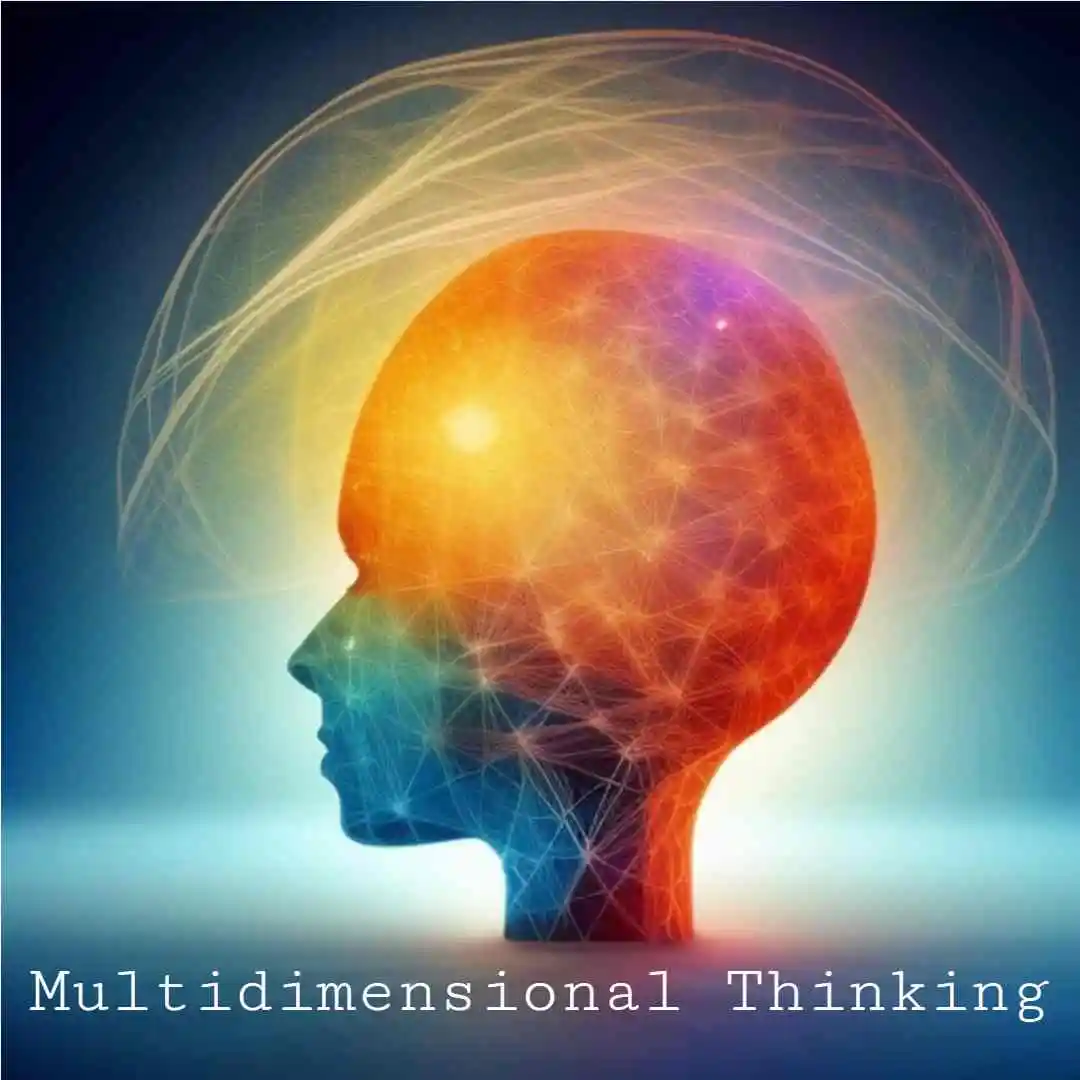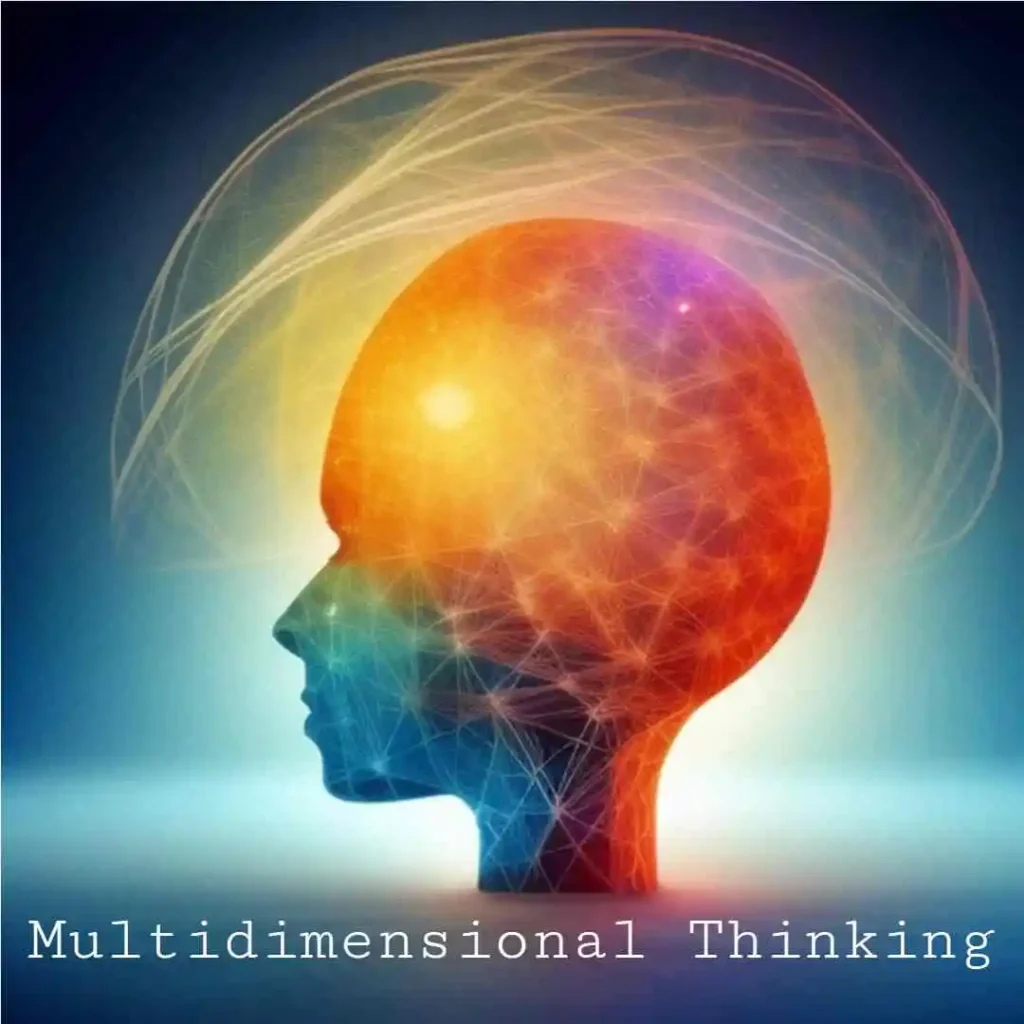If you have been following this blog for a while, you may know that we have already covered a lot of blog posts on the topic of perspective. We have delved deeply into understanding perspectives and have correlated them with the principles of synched harmony in these articles. However, before we proceed with the agenda of multi-dimensional thinking in today’s article, it is essential to understand the true meaning of perspective and its formation in an actual sense for any human being.
Your perspective is a way of looking at things or expressing your opinion about something. Therefore, it is crucial to understand that one cannot categorically label any perspective as right or wrong because it is influenced by several parameters that cannot be consistently justified as morally correct or incorrect. It is necessary to comprehend these parameters to understand how perspective formation occurs.
What factors play a role in the formation of perceptions?
Several factors contribute to the formation of perceptions, let’s understand these factors briefly:
- Senses: The role of your senses plays a significant part in perspective formation. Your perspective in any situation is curated based on what you hear, see, or sense at a given time. It’s often said that trusting half-truths or baseless incomplete information can be harmful and accepting them as facts may prove to be even more detrimental.
- As an example, Blindly following fake influencers on social media may alter the way you perceive things and your perspective developed around them.
- Mind Conditioning: At any moment, the thoughts running through your mind, the circumstances you’ve encountered that have influenced your thoughts, and the way your mind has been conditioned to think in a particular direction play a significant role in shaping your perspective in any situation.
- It shows that your mind has a crucial role to play in the formation of your perspective because the whole environment around you can be set up and conditioned in a way that makes you believe whatever is happening around is real and the actual truth.
- Your Understanding: Your understanding of the situation plays a significant role in shaping your perspective. For instance, if you are already aware that a high-selling branded product is not as good as it is marketed and is not worth the hype then no matter how much other people recommend it, you’ll hesitate to buy that product because your understanding of it has been developed negatively.
- Your existing knowledge and personal experiences influence the way you think about it, regardless of the marketing and positive recommendations from others.
- People Influence: Many times, your perspective is influenced by the people around you whom you trust and respect, they can alter your thoughts and thinking process. Sometimes, your views on something may change after hearing the views of others around it.
- You might have observed that there are numerous influencers globally whose influence has significantly shifted the perspectives of many people, either positively or negatively. Therefore, the influence of people, especially those we follow and consider as idols, or that are close to our hearts, plays a significant role in perspective formation.
- Environment: The environment around you indeed plays a crucial role in perspective formation – the place where you live, the people you interact with, and their prevailing attitudes. The impact of things in your surroundings, the people you’re surrounded by, and the conditions in which you were raised influence the way your thoughts are shaped, thus shaping your perspective accordingly.
- A positive environment often stimulates positive thoughts in your mind, while a predominantly negative atmosphere can lead to negative thinking. Remember, for a positive outcome in any situation, the surrounding environment needs to be positive as well.
- Implanted Knowledge: Implanted knowledge may not be a familiar term, but understanding it is quite straightforward. Consider it the case of first learning from our childhood where it was taught that two ones are equivalent to two, two twos are equivalent to four, and so on. Because this knowledge has been ingrained in our minds since childhood, and there are numerous studies and facts supporting its validity, we believe it to be true since then.
- Similarly, perspectives can be shaped by implanting knowledge. Implanted knowledge can influence someone’s perspective from positive to negative or vice versa, proving beneficial or potentially harmful accordingly. The effectiveness of implanted knowledge depends on how extensively it is verified with facts and proofs.
- Beliefs and Experiences: Your personal experiences and beliefs are crucial in perspective formation. As we discussed earlier, if your personal experience with something is negative, it’s unlikely that you’ll form a positive perspective about it. Conversely, it’s challenging to believe in or accept something that goes against your existing beliefs. They say time teaches everything, and indeed, over time, experiences shape your beliefs, enhancing your life learnings and influencing the way your perspective is formed around various aspects of life.
If there’s any specific parameter or detail within these aspects that you’d like me to cover in more depth, please let me know in the comment section, and I’ll be happy to provide more information or insights. Above, we explored how a perspective is formed. Now, before moving forward, let’s discuss multi-dimensional thinking so that we can better understand the relationship between it and perspectives more effectively.
What is Multi-dimensional Thinking?
From the context of synched harmony, multi-dimensional thinking involves considering a situation from various angles and understanding the perspectives of each view. It involves looking at a situation from different viewpoints and grasping aspects that your limited perspective might not be able to comprehend otherwise. It means understanding the context more comprehensively and comprehending the relationship between different perspectives.
Many people might confuse it with knowing others’ perspectives and mindsets. Still, I want to clarify to the audience that there is a slight difference between the two as knowing other’s perspectives is about listening to their thoughts and opinions without judging or deriving any inferences from them directly. At the same time, multi-dimensional thinking involves deep thinking from different lenses with the intent of making things clear and identifying the root cause of the problem.
Characteristics of Multi-dimensional Thinking
- Scenario-Based Thinking: Multi-dimensional thinking involves scenario-based thinking, where you focus on each scenario individually intending to grasp the insights by considering the factors that may have caused disruptions in a particular scenario, reflecting on potential improvements, and contemplating the outcomes. It requires a deep examination of each scenario to enhance your understanding and decision-making ability.
- Critical Thinking: When you analyze scenarios one by one, your critical thinking skills are also triggered. It involves a thoughtful assessment of both positives and negatives, enabling you to make informed judgments. Critical thinking is a key aspect of multi-dimensional thinking, stimulating your creative thinking and aiding in the development of innovative approaches to handling conflict situations. Some decisions are best made with a calm and composed mind, balancing enthusiasm and prudence.
- Comprehensive View: A multi-dimensional thinker considers all elements and details of a specific situation, gaining a comprehensive understanding of the conflicting situation. Focusing on each detail reveals nuances that might be overlooked otherwise. These details can sometimes be transformative, altering your perspective on a specific situation. Taking a comprehensive view is essential for a thorough understanding of the situation.
- Connecting the Dots: Multi-dimensional thinking entails adopting diverse perspectives, going beyond conventional viewpoints, and extracting valuable insights. It revolves around connecting various elements, identifying patterns, comprehending the situation from different angles, and forming a holistic understanding. This approach bridges the knowledge gap caused by limited perspective, paving the way for exploring potential solutions to a given situation.
- Seeing Beyond the Frame: It involves considering perspectives beyond your limited viewpoint. It’s about contemplating factors that will impact you not only in the short term but also in the long term. While keeping an eye on the bigger picture, it helps enhance your existing mindset. This approach aids in evaluating the consequences of your actions, preventing hasty decisions, and allowing for more thoughtful choices.
- Thinking Calmly and Carefully: Multi-dimensional thinking is not a rapid outcome process; it requires a calm and composed mind. It involves careful consideration of the situation and contemplation from various angles, weighing the pros and cons before arriving at a well-thought decision. Patience and time are crucial in this process, allowing for a thorough examination and ensuring a more informed and balanced outcome.
- Well Thought Decisions: Decisions made through multi-dimensional thinking are considered well-thought because they don’t rely on just one scenario; instead, they are based on a thorough analysis of various factors. This approach involves carefully considering and understanding multiple aspects before arriving at a decision, ensuring a more comprehensive and informed choice.
- Devise Possible Solutions: It involves scenario-based analysis not just to identify mistakes, but primarily to devise possible solutions that can resolve the conflict. Understanding what happened, identifying triggers, analyzing what went wrong, and determining how to rectify the situation are crucial steps before reaching a solution. This process of thorough investigation and consideration is where multi-dimensional thinking proves valuable in crafting an ideal and comprehensive solution.
Indeed, multi-dimensional thinking involves contemplating various dimensions. It includes parallel recreation of different scenarios for a particular situation, allowing you to assess potential outcomes by considering what might have happened under various circumstances. This approach helps in gaining a more nuanced understanding of the situation through the exploration of hypothetical scenarios.
How Does Multi-dimensional Thinking Shape Your Perspective?
- Holistic View: Multi-dimensional thinking provides you with a holistic view that expands your limited perspective. It familiarizes you with things that you were not aware of before, and as a result, your outlook on a particular situation might undergo a complete transformation. Therefore, before expressing your opinion on any issue, it is essential to thoroughly contemplate and reflect on the problem so that your perspective on it becomes clear.
- Enhanced Perspective: Your narrow perspective broadens, which is crucial for effective decision-making. It is better to examine a situation from every angle and make a thoughtful, solution-oriented decision rather than relying on the knowledge from a one-sided perspective and regretting it later. You will be able to discern the difference between morally correct and incorrect, preventing you from taking the wrong step.
- Better Understanding: Your understanding of the underlying situation improves, providing you with clarity on many aspects that were unclear before. Taking all the insights into account, your mindset undergoes a positive change and begins to work towards a solution-focused outcome. This mindset enables you to concentrate on enhancing overall outcomes and developing a possible solution that benefits everyone.
- Calculated Decisions: Multi-dimensional thinking enables you to thoroughly examine scenarios, empowering you to make well-thought-out and calculated decisions. The benefit of calculated decisions is that you are less likely to regret them later, as you have considered and understood the implications. This approach helps in improving circumstances and minimizes the consequences of impulsive decisions. In short, it prevents you from making hasty decisions and provides you with an opportunity to handle situations with greater care.
- Long-Term Considerations: When you form your perspective through multi-dimensional thinking, it doesn’t only take into account short-term and immediate considerations but also incorporates long-term consequences. This approach ensures that before making any decision, you not only think about the present but also consider the future. This shift in perspective leads to a change in your actions, aligning them with a more future-oriented mindset.
- Moral Clarity: Multi-dimensional thinking provides you with moral clarity, helping you distinguish between what is clear, just, and unjust. It allows you to understand the complexities of the world in a more nuanced way, and you gain a better sense of the distinctions between right and wrong. This process enhances your maturity, leading to a significant shift in how you perceive and approach various aspects of life.
- Breaks Bigger Problems: The biggest advantage of multi-dimensional thinking is that it helps you break down a large problem into smaller, manageable components. This means it becomes easier to analyze what went wrong and how it can be rectified. Examining these smaller components through multi-dimensional thinking simplifies a complex problem and aids in providing a fruitful resolution.
- Solution-Oriented Approach: Thinking in a multi-dimensional way is a solution-oriented approach where the focus is not on finding faults in others, but on identifying an optimum solution. This approach shapes your perspective and mindset in a manner that encourages thinking about solutions by carefully evaluating various scenarios within a situation. Your approach to problems is such that you aim to find a solution rather than just identifying the problem.
 The above representation is taken from Multi-Dimensional Thinking – Mark Lundegren
The above representation is taken from Multi-Dimensional Thinking – Mark Lundegren
What is a Multi-dimensional Perspective in Multidimensional Thinking?
When you carefully assess any situation from every angle, weighing the pros and cons of every possible scenario, the perspective that emerges is referred to as a multi-dimensional perspective. Now, it’s important to understand that your perspective around that situation doesn’t need to be limited to just one-sided, as there could be multiple scenarios with multiple possible optimal outcomes.
These outcomes might favor a peaceful and optimal resolution in that particular scenario, but it doesn’t necessarily imply a direct association with a multi-dimensional perspective.
It’s about having deeply assessed all scenarios, leading to a comprehensive understanding that guides you towards morally correct and incorrect aspects of the situation. You manage to comprehend what needs to be done next, and the decision or the course of action you choose, or convey, is based on an awareness of the potential consequences.
Creating a multi-dimensional perspective is indeed a characteristic of a smart multi-dimensional thinker, indicating their capability to bring forth an optimal solution. To cultivate such a perspective, strong root cause analysis skills are required, where you repeatedly ask yourself the question “Why?” until the core root cause of the issue becomes apparent.
A curious mindset is crucial for multidimensional thinking, as it drives you to explore the depths of a problem, reaching a point that is not otherwise easily accessible. Developing a perspective that encompasses various dimensions requires continuous inquiry and a commitment to understanding the intricacies of the situation.
A key aspect of a multi-dimensional perspective is that it is not biased. It doesn’t intentionally favor any specific scenario; instead, it supports a scenario that is favorable for everyone or aligns with a morally correct decision.
The goal is to consider all angles objectively, ensuring that the resulting perspective is fair, just, and morally sound. This absence of bias is crucial in promoting a well-rounded and inclusive approach to decision-making, fostering outcomes that benefit the broader spectrum and uphold ethical principles.
Conclusion
To conclude, multi-dimensional thinking is a highly significant skill that can completely transform your perspective. When used correctly, this skill enables you to delve into the depths of situations that may otherwise remain unseen.
While perception is influenced by numerous factors, incorporating multi-dimensional thinking and maintaining a calm and composed attitude contributes to the formation of a positive, solution-oriented perception.
This approach allows for a more comprehensive understanding of situations, paving the way for effective problem-solving and decision-making.
FOLLOW Synched Harmony Join our vibrant community for daily inspiration. Swipe-Up to follow for more related content.


